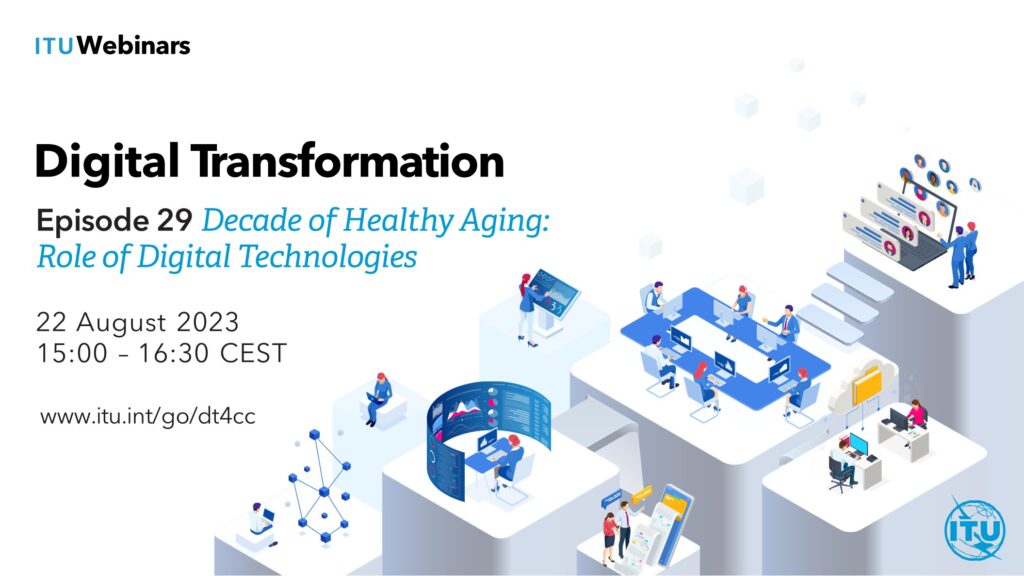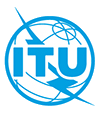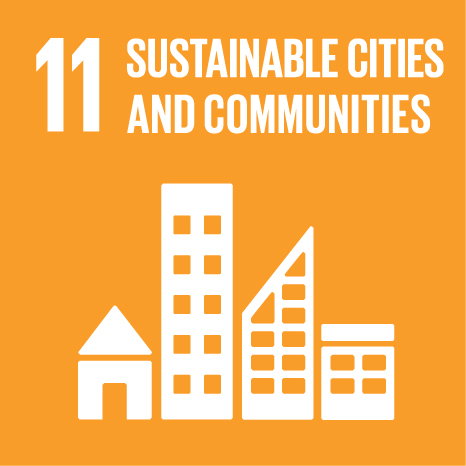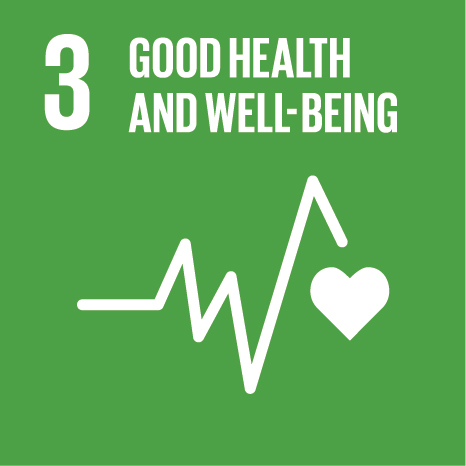Episode #29: Decade of healthy aging: role of digital technologies

Description
According to UNDESA, as of 2019, there were over 703 million people above the age of 65, which constituted 9% of the global population. By the year 2050, this number is projected to reach 1.5 billion. To address challenges associated with the aging of populations and increase quality of life of older people, their families and improve the communities in which they live, the United Nations has declared the period from 2021 to 2030 as the Decade of Healthy Aging. The World Health Organization (WHO) has defined healthy aging as the process of maintain functional ability that enables well-being in older ages; and functional ability is being able to be and to do activities one value for as long possible.
In support to the Decade the ITU within the work on “Diversity and Inclusion” of the Development Bureau, developed since 2021 a dedicated programme on “Ageing in the digital world”. Additional tools and resources including Thematic Report on “Ageing in the Digital World from Vulnerable to Valuable” and other resources including on-line self paced training on ICT for better ageing and livelihood in the digital landspace and video tutorial were made freely available to support policy and decision makers efforts in addressing the challenge of the two global mega trends, the rice of technology and population aging.
ITU also prepared the document The Role of Digital Technologies on Aging and Health, which is part of the PAHO’s series “The Decade of Healthy Aging in the Americas: situation and challenges”.
Data-enabled technologies are important assets to support healthy aging. Additionally, the solutions provided by artificial intelligence (AI), smart wearables, and internet of things (IoT), are also examples of how new and emerging technologies can help older adults in becoming self-reliant, monitor vitals, track behavioural changes, ease interactions with medical-care professionals, provide health information and send timely alerts in case of emergencies. Additionally, technology if designed and delivered in digital accessible formats with ICT digital accessibly standards and universal design principles in mind, can be used to ensure age-friendly digital environments, which can be favored functional ability for individuals with different levels of mental and physical capacities, as well as for tackling and avoiding social isolation. For example, during COVID-19, older people with internet access, suitable ICT devices, and technologically literate coped better with lockdowns restrictions, as it helped in staying connected with family, received up-to-date information, and thus avoid isolation. Moreover, knowledge to access and use technology and related e-services to buy vital products including medicine and food was almost a compulsory requirement for independent living of older persons.
This webinar explored how digital technologies can offer scalable means for equipping patients with self-management techniques, offer feedback and support to improve patient confidence and independence among the elderly.
Target Audience
Participation is open to the ITU Member States, Sector Members, Associates, ITU Academia, and to any individual from a country that is a member of the ITU and who wishes to contribute to the work. This includes individuals who are also members of international, regional and national organizations. Participation to the webinar is free of charge.
Note: The views and opinions expressed by the presenters during this event are solely those of the individual speakers and do not necessarily represent, reflect, or constitute the official stance, policy, or position of the International Telecommunication Union (ITU) or its secretariat.
Organized by:


UN SDGs


ITU Strategic Goals


Related Information:
Digital Transformation Webinar Series
ITU-T Smart Sustainable Cities
ITU-T Study Group 20: IoT and smart cities and communities
Contact: Cristina Bueti
Programme
15:00 – 15:10
Opening remarks
- Seizo Onoe, Director, Telecommunication Standardization Bureau, ITU
- Enrique Vega, Life course Unit Chief PAHO/WHO
15:10 – 16:25
Session 1: Healthy Aging in the Digital Age
Moderator: Patricia Morsch, Advisor Healthy Aging PAHO/WHO
- Roxana Widmer-Iliescu, Senior Coordinator for Digital Inclusion, ITU [Presentation]
- Pierpaolo Palumbo, University of Bologna, Italy [Presentation]
- Praveen G. Pai, Professional, Geriatrics Medicine, Gerontology, and Public Health
Questions & Answers
16:25 – 16:30
Closing remarks
- Cristina Bueti, Counsellor, ITU
